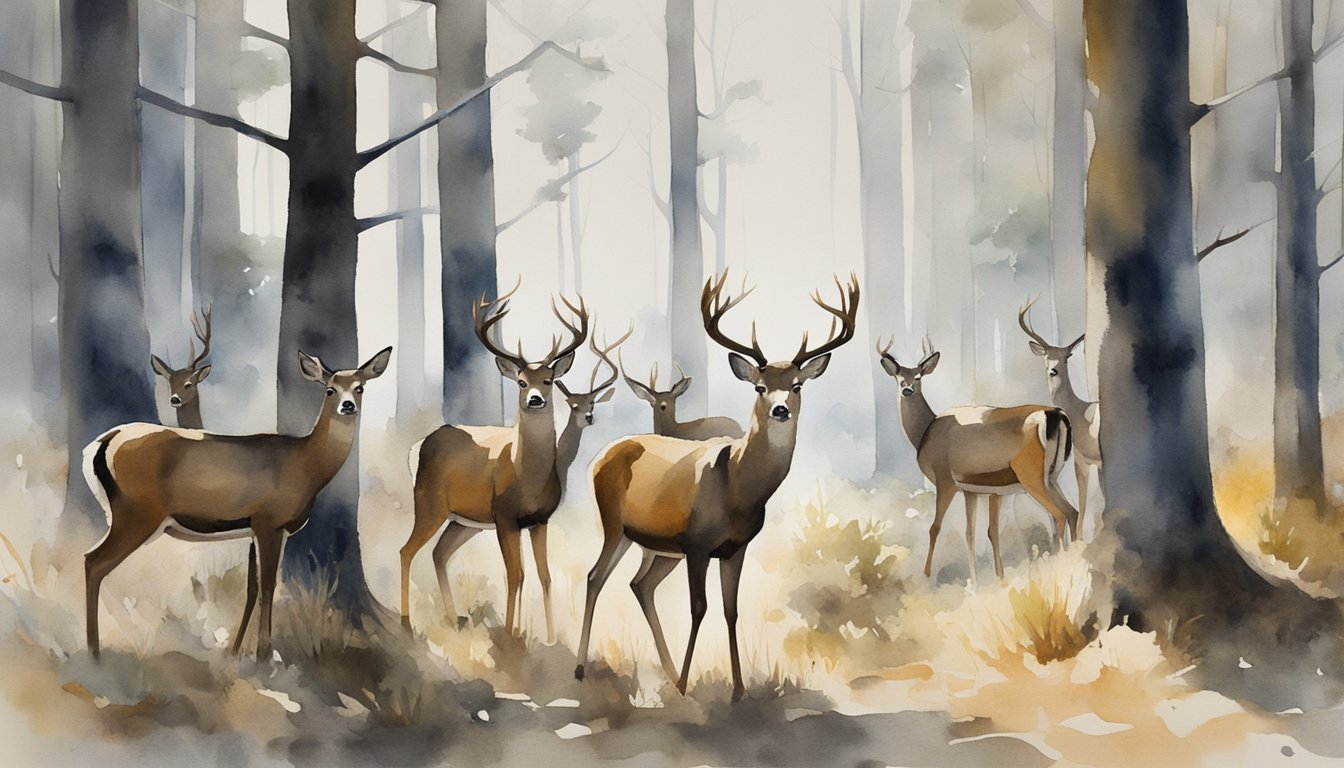Understanding Zombie Deer Disease
Zombie Deer Disease, more formally known as Chronic Wasting Disease (CWD), is a serious neurological condition affecting deer, elk, and moose across North America and beyond. It is caused by misfolded proteins called prions, resulting in severe symptoms in the infected animals.
What Is Chronic Wasting Disease?
Chronic Wasting Disease is a fatal, degenerative disorder that affects the central nervous system of cervids such as deer, elk, and moose. It is classified among transmissible spongiform encephalopathies (TSEs), a group of prion diseases that includes the likes of Creutzfeldt-Jakob disease in humans and bovine spongiform encephalopathy (BSE) in cattle.
The Spread of CWD in North America and Beyond
Since its first identification in captive deer in Colorado and wild deer in Wisconsin during the 1960s, CWD has spread significantly within North America, encompassing states like Minnesota and Canadian provinces such as Alberta. Besides North America, cases have been detected even in countries like Norway, showing the disease’s potential for widespread transmission.
Prions: The Culprits Behind CWD
Prions are deformed proteins that propagate by inducing other normal proteins within the brain to misfold in a similar manner. These misfolded proteins accumulate and lead to brain tissue damage, essentially causing the brain to become sponge-like.
Recognizing Symptoms of CWD in Animals
Infected deer typically display a range of neurological symptoms, which can include drastic weight loss, stumbling, and behavioral changes like a loss of fear of humans. The progressive nature of the disease is such that it leads to a vacant gaze and listlessness, which has given the condition its nickname “zombie deer disease.”
Impact and Management of CWD

Chronic Wasting Disease (CWD) is a prion disease affecting cervids, such as deer, elk, and moose. As it continues to impact wildlife populations, understanding its effects and managing its spread are critical for maintaining ecosystem balance and ensuring human safety.
Effects of CWD on Wildlife and Ecosystems
CWD can cause significant declines in affected wildlife populations. The illness is always fatal and leads to severe brain damage in infected animals. Infected individuals show symptoms like weight loss and disorientation, often becoming more susceptible to predators and accidents. The depletion of these animal populations disrupts local ecosystems and food chains, as cervids play essential roles in maintaining the ecological equilibrium. Instances of CWD have been reported in North America and Scandinavian countries, indicating its growing geographic reach.
CWD’s Relevance to Human Health
Although transmission of CWD to humans has not been recorded, concerns persist due to the nature of prion diseases. Currently, there is no evidence that CWD can infect humans, and it’s not viewed in the same light as Creutzfeldt-Jakob Disease (CJD), a prion disease that affects humans. Nonetheless, the Centers for Disease Control and Prevention (CDC) recommends that hunters avoid consuming meat from infected animals as a precaution.
Research and Surveillance Efforts
Surveillance programs are essential in tracking the spread of CWD. Wildlife veterinarians and researchers conduct necropsies and test lymph nodes for prion presence to monitor infection rates. There is ongoing scientific investigation to comprehend various CWD strains and their effects. To date, no vaccines can prevent CWD, which makes rigorous surveillance and research paramount.
Guidelines for Hunters and the Public
The CDC has issued guidelines for hunters to reduce the risk of spreading CWD. They recommend testing any harvested animal for CWD before consuming the meat and avoiding meat from any animal that tested positive. Hunters are also advised to use precaution when handling carcasses—wearing gloves and minimizing contact with organs, particularly the brain and lymph nodes where prions concentrate. Public education on CWD and its management is essential to prevent further contamination, including the potential for soil to harbor the prions.
By staying informed and adopting safe practices, we can work together to manage and mitigate the effects of CWD on our wildlife and ecosystems.

